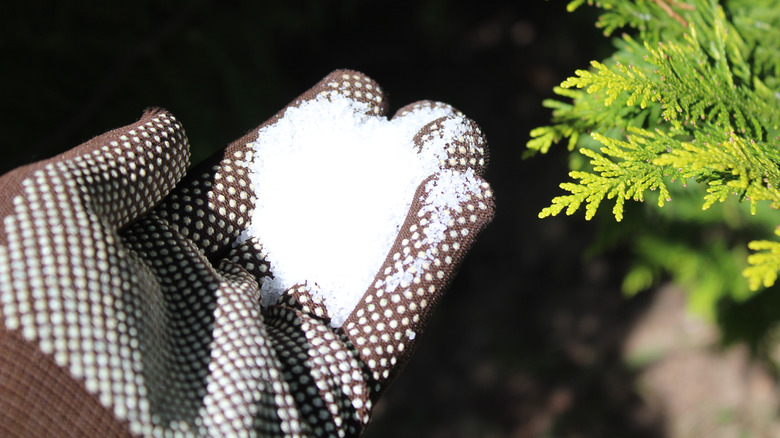Garden Trees, Shrubs & Vines
Claire Dangalan
Magnolia trees are renowned for their fragrant blossoms that grace gardens with their ethereal beauty. Yet, for those who cultivate these magnificent trees, the wait for the first bloom can be long and sometimes elusive. Magnolias typically take a couple of years to flower, often even taking as many as 10 to 20 years to produce their first blooms. This waiting period can test the patience of even the most dedicated gardeners. But what if you’re longing for those beautiful blooms and want an abundance of them sooner rather than later? This is where using Epsom salt in the garden comes into play. Also known as magnesium sulfate, Epsom salt can be the answer to encouraging your magnolia tree to produce plenty of flowers in a shorter timeframe.
The main reason behind the delay in blooming among magnolias lies in the nature of the tree itself. Belonging to the genus Magnolia, which comprises many species, each of these trees (or bushes) has unique requirements for flowering. Most magnolias, especially young ones, channel their energy into establishing strong root systems and sturdy branches before diverting resources to flower production. It’s a surefire way of ensuring the tree’s long-term health and survival. In fact, magnolia trees, on average, have a 120-year lifespan, and they’re one of the oldest flowering trees to ever exist, predating even the existence of bees. Amazing, right?
Using Epsom salt to produce a profusion of flowers

Martina Unbehauen/Shutterstock
To use Epsom salt as a foliar spray, simply dissolve a tablespoon of it in 1 gallon of water. Make sure it is thoroughly mixed before spraying it on the foliage. You may also want to try the advice of the Epsom Salt Council to apply 2 tablespoons of Epsom salt over every 9 square feet of the tree root zone. Do this three times a year for optimum results. This allows the magnesium from the product to be absorbed by the roots and utilized for the formation of chlorophyll.
The science behind this method is quite simple. Magnesium is a vital component of chlorophyll, the green pigment responsible for photosynthesis in plants. When you provide your magnolia tree with an extra dose of magnesium, it enhances the overall efficiency of photosynthesis. This, in turn, results in increased energy production, which can be directed toward blooming rather than solely supporting growth.
Remember to use Epsom salt in moderation and not to use it in acidic soil, as it may negatively impact your magnolia’s overall health by causing root burn. With patience, care, and the proper use of Epsom salt, your magnolia tree will grow a profusion of lovely, sweet-smelling blossoms.




